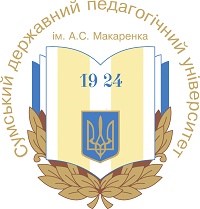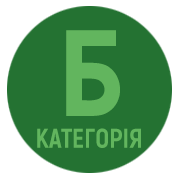DYNAMICS OF NUTRIENT POLLUTION IN DNIEPER RESERVOIRS: COMBINING HYDROCHEMICAL AND REMOTE SENSING TECHNIQUES
DOI:
https://doi.org/10.32782/naturalspu/2025.1.16Keywords:
surface waters, nutrients, ammonium, phosphates, eutrophication, algae bloom, Dnieper reservoirs, remote sensing, NDWIAbstract
The Dnieper River's surface waters are under constant anthropogenic pressure due to various wastewater discharges. These discharges introduce nutrients to water that negatively impact the aquatic ecosystem, driving eutrophication which is the process that occurs when the environment becomes enriched with nutrients, increasing the amount of plant and algae growth. Nutrients include nitrogen and phosphorus compounds due to their ability to affect the vital functions of microorganisms and plants and cause biogenic pollution of water bodies. As the Dnipro River provides drinking and food water for 70% of the population, studying its pollution dynamics is strategically vital. The Dnipro reservoir cascade exhibits heightened sensitivity to biogenic contamination due to diminished water exchange rates, sedimentation, and progressive shallowing of extensive regions. This study aimed to investigate the dynamics of nutrient pollution in reservoir surface waters using hydrochemical analyses and remote sensing techniques. The study focused on the Dnieper Reservoir and the lower Kamianske Reservoir, specifically from Auly to Dnipro. It examined long-term and seasonal changes in ammonium (NH4+) and phosphate (PO43-) concentrations in surface waters from 2015 to 2023 and analyzed NDWI derived from Sentinel-2A satellite data from 2017 to 2023. The findings indicated that the Dnieper and lower Kamianske Reservoirs form a single ecological-hydrochemical zone, characterized by similar annual and seasonal nutrient distribution patterns. Long-term ammonium trends show a gradual increase across the study area. Phosphate levels exhibited greater seasonal variability than ammonium, peaking in August-September, which aligned with maximum eutrophication with algae bloom observed via satellite imagery. Seasonal water quality trends, based on ammonium and NDWI, revealed consistent increases in pollution during the growing season, followed by a slowdown in colder months. Combining hydrochemical and remote sensing data provides a robust method for assessing surface water pollution dynamics, which can inform the development of effective monitoring systems and water quality management strategies.
References
Звіт про стратегічну екологічну оцінку проєкту Закону України «Про внесення змін до Закону України «Про затвердження Загальнодержавної цільової програми розвитку водного господарства та екологічного оздоровлення басейну річки Дніпро на період до 2021 року». 2021. 55 с. DOI: https://davr.gov.ua/proyekt-zakonu-ukraini-pro-vnesennya-zmin-do-zakonu-ukraini-pro-zatverdzhennya-zagalnoderzhavnoi-cilovoi-programi-rozvitku-vodnogo-gospodarstva-ta-ekologichnogo-ozdorovlennya-basejnu-richki-dnipro-na-period-do-2021-roku.
Національна доповідь про стан навколишнього природного середовища в Україні у 2021 році. М-во зах. довкілля та природ. ресурсів України, 2021. 514 с. DOI: https://mepr.gov.ua/wp-content/uploads/2023/01/Natsdopovid-2021-n.pdf.
Пічура В. І., Потравко Л. О. Екологічний стан басейну ріки Дніпро та удосконалення механізму організації природокористування на водозабірній території. Водні біоресурси та аквакультура. 2021. No. 1. P. 170–200. DOI: https://doi.org/10.32851/wba.2021.1.14
Строкаль В. П., Ковпак А. В. Причинно-наслідкові зв’язки забруднення біогенними елементами басейну річки Дніпра: синтез теоретичних даних. Екологічні науки. 2021. Vol. 35, no. 2. P. 37–44. DOI: https://doi.org/10.32846/2306-9716/2021.eco.2-35.6
Хільчевський В. К., Осадчий В. І., Курило С. М. Основи гідрохімії : підручник. Київ : Ніка-Центр, 2012. 312 с.
Дудник С. В., Євтушенко М. Ю. Водна токсикологія: основні теоретичні положення та їхнє практичне застосування : монографія. Київ : Вид-во Укр. фітосоціол. центру, 2013. 298 с.
Khan F. A., Ansari A. A. Eutrophication: an ecological vision. The botanical review. 2005. Vol. 71, no. 4. P. 449–482. DOI: https://doi.org/10.1663/0006-8101(2005)071[0449:eaev]2.0.co;2
Чуб І. М. Мікробіологія і хімія води. Харків : ХНУМГ ім. О. М. Бекет., 2019. 122 с.
Хільчевський В. К., Гребінь В. В. Великі і малі водосховища України: регіональні та басейнові особливості поширення. Гідрологія, гідрохімія і гідроекологія. 2021. Т. 60, № 2. С. 6–17. DOI: https://doi.org/10.17721/ 2306-5680.2021.2.1
Грига М. Ю. Оцінка просторово-часових змін біохімічного споживання кисню (БСК) поверхневих вод Дніпра. Гідрологія, гідрохімія і гідроекологія. 2024. Т. 72, № 2. С. 29–41. DOI: https://doi.org/10.17721/2306-5680.2024.2.3
Грига М. Ю. Еколого-геохімічна оцінка закономірностей розподілу сполук азоту і фосфору в поверхневих водах Дніпра. Вісник Одеського національного університету. Географічні та геологічні науки. 2024. Т. 29, № 2 (45). С. 122–136. DOI: https://doi.org/10.18524/2303-9914.2024.2(45).318044
Вишневський В. І. Просторово-часова мінливість «цвітіння» води у дніпровських водосховищах. Український журнал дистанційного зондування Землі. 2019. Т. 20. С. 18–27.
Пічура В. І. Просторово-часові тенденції зміни трофічного стану водосховищ річки Дніпро. Вісник Національного університету водного господарства та природокористування. Сільськогосподарські науки. 2016. Вип. 4 (76). С. 3–21.
Hryha M. Y. Evaluation of chemical indicators of anthropogenic influence in the Lower Danube basin. Hydrology, hydrochemistry and hydroecology. 2024. No. 1 (71). P. 74–84. DOI: https://doi.org/10.17721/2306-5680.2024.1.7
Özelkan E. Water body detection analysis using NDWI indices derived from landsat-8 OLI. Polish journal of environmental studies. 2020. Vol. 29, no. 2. P. 1759–1769. DOI: https://doi.org/10.15244/pjoes/110447
Detection of floating algae blooms on water bodies using planetscope images and shifted windows transformer model / J. Ahn et al. Remote sensing. 2024. Vol. 16, no. 20. P. 3791. DOI: https://doi.org/10.3390/rs16203791
Distinguishing algal blooms from aquatic vegetation in Сhinese lakes using Sentinel 2 image / J. Pu et al. Remote sensing. 2022. Vol. 14, no. 9. P. 1988. DOI: https://doi.org/10.3390/rs14091988
Alharbi B. Remote sensing techniques for monitoring algal blooms in the area between Jeddah and Rabigh on the Red Sea Coast. Remote sensing applications: society and environment. 2023. P. 100935. DOI: https://doi.org/10.1016/j. rsase.2023.100935
McFetters S. K. The use of the Normalized Difference Water Index (NDWI) in the delineation of open water features. International journal of remote sensing. 1996. Vol. 17, no. 7. P. 1425–1432. DOI: https://doi.org/10.1080/01431169608948714
Gao B.-c. NDWI–A normalized difference water index for remote sensing of vegetation liquid water from space. Remote sensing of environment. 1996. Vol. 58, no. 3. P. 257–266. DOI: https://doi.org/10.1016/s0034-4257(96)00067-3
Vu J., Harrington D. Introductory statistics for the life and biomedical sciences. OpenIntro, Inc., 2020. 472 p.
Schober P., Boer C., Schwarte L. A. Correlation coefficients. Anesthesia & analgesia. 2018. Vol. 126, no. 5. P. 1763–1768. DOI: https://doi.org/10.1213/ane.0000000000002864
Хільчевський В. К., Осадчий В. І., Курило С. М. Регіональна гідрохімія України : підручник. ВПЦ «Київ. ун-т», 2019. 343 с.







